Part of a series of articles titled Dayton and Montgomery County, OH, WWII Heritage City.
Article
(H)our History Lesson: Aviation and Defense Industry in Dayton and Montgomery County, Ohio
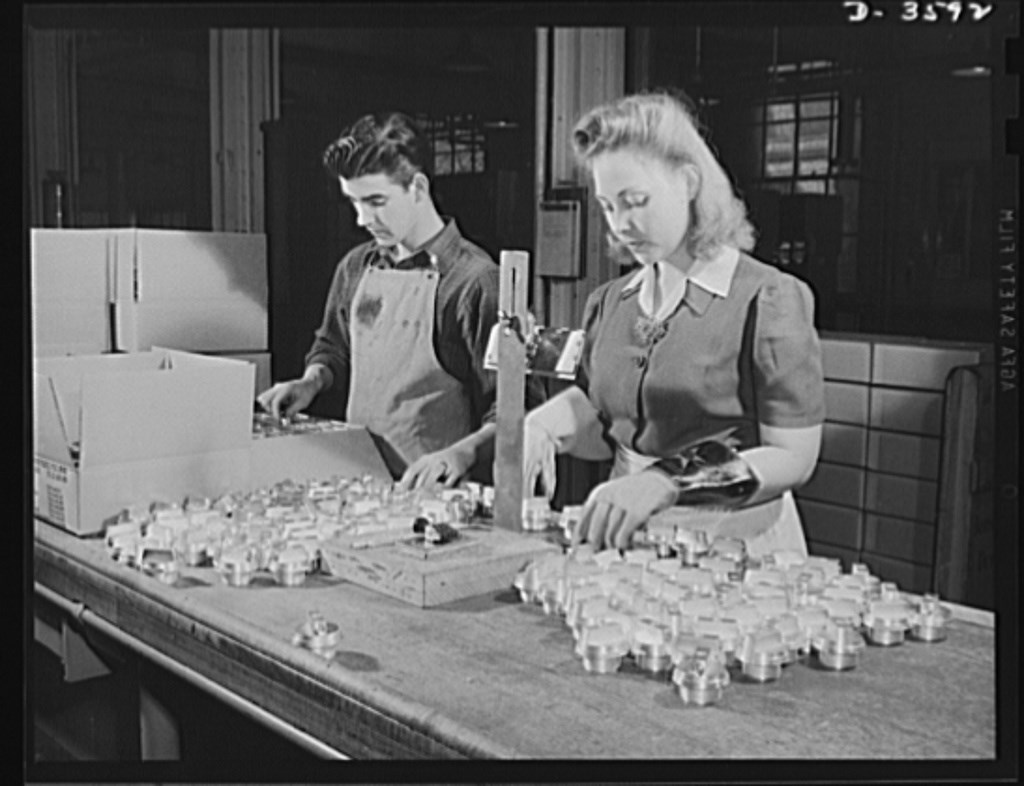
Courtesy of the Library of Congress
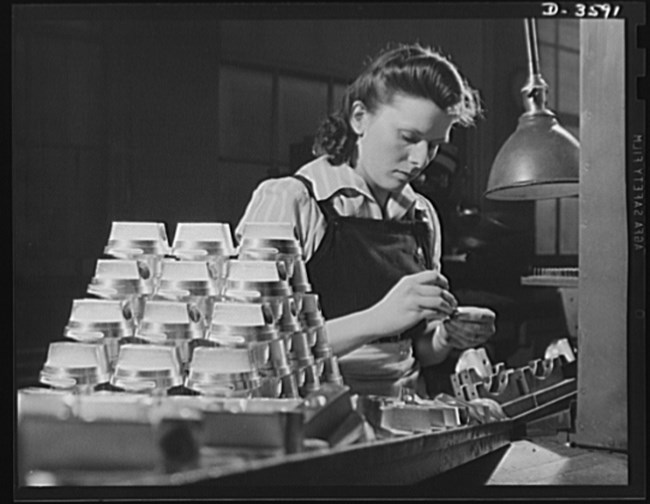
Courtesy of the Library of Congress
About This Lesson
This lesson is part of a series teaching about the WWII home front, focused on Dayton and Montgomery County, Ohio as an American World War II Heritage City. During the war many of the local manufacturers turned to necessary war production, and the local military bases expanded, particularly due to an expanding US presence in the air. The lesson contains photographs and readings to contribute to learners’ understandings of local advancements in aviation and defense industry. It was written by educator Sarah Nestor Lane.
Objectives:
- Describe the importance of war manufacturing in Dayton and Montgomery County with specific examples.
- Explain how the region supported military advancements in aviation.
- Interpret the short- and long-term impacts of war production and aviation advancements on the region, including how this history is connected to the Dayton Aviation Heritage National Historical Park.
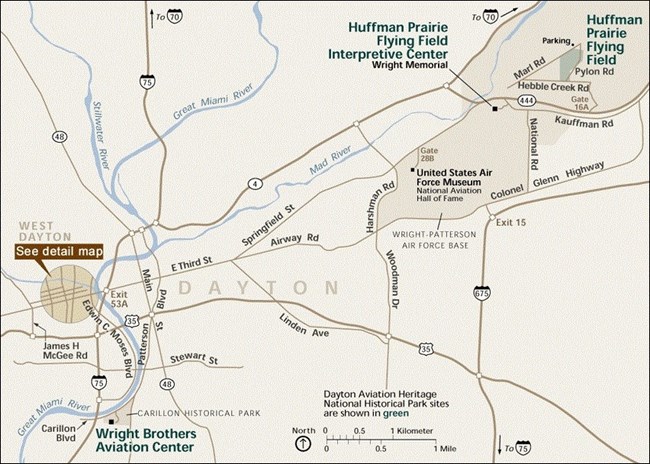
Materials for Students:
- Photos 1 – 4 & Map 1 (can be displayed digitally)
- Readings 1 & 2 (one secondary and one primary source)
- Recommended: Map of the Dayton area, Montgomery County, or the state of Ohio, to mark historical locations.
- Extension / Resources (optional)
Getting Started: Essential Question
How did Dayton and Montgomery County contribute to the material and strategic needs of the US military during WWII?
Read to Connect
Dayton was a busy hub leading up to, and during, the United States’ entry into the war. Many manufacturers and factories produced important defense materials for the Allies and US. Wright Field was developed for the United States Army Air Corps and helped to research, improve, and produce many planes.
Defense Industry and Manufacturing
By 1942, Dayton manufacturers were unable to produce their regular peacetime products, like cash registers or refrigerators. They could not obtain the materials as they were needed for defense production. Manufacturers turned to defense production. Dayton war products included propellers, carbines, guns, wheels, tires, and other essential defense products (Learn more in Reading 2, “Contribute Too”).
Many women were employed in these industries, assembling parts and working machines. Companies such as Delco Motors and Leland Electric hired women to work in assembly. These women workers were critical to meeting the demand for production.
Aviation
To improve the force and capabilities of the Army Air Corps, the government supported the improvement of Wright Field in 1940 (first opened in 1927). By 1944 there were over three hundred buildings at Wright Field, and thousands of planes had been designed and built there. Wright Field headquartered The Material Command, which included maintaining and distributing materials for planes. Research and design focused on improving safety for the crews, but also planes’ durability as weapons of war, with increased horsepower and range. Some of the airplanes designed and constructed at Wright Field included the C-47 Skytrain and B-29 Superfortress.
Nearby Patterson Field included Fairfield Air Depot and the Huffman Prairie Flying Field. Patterson Field’s Air Service Command supported logistics, supply, and maintenance. It was a separate installation from Wright Field, but the missions at both aligned to the Army Air Corp missions. Like the factories, there was a shortage of male labor. Women represented half of the workforce at Patterson Field by 1944.
In 1947 the United States Air Force was established, which eliminated the Army Air Forces. Wright Field was then combined with Patterson Field to create Wright-Patterson Air Force Base. Today Dayton is also the location of the Dayton Aviation Heritage National Historical Park (map 1).
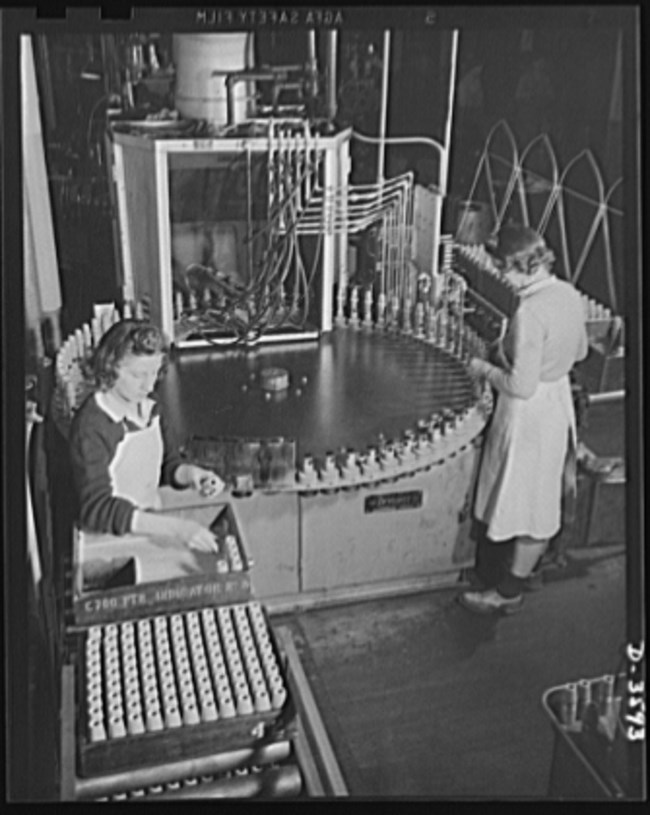
Courtesy of the Library of Congress
By the numbers:
-
300 million dollars designated by the federal government in 1940 to both improve Wright Field and establish an Air Corps with at least 5,500 planes. (In 2023, this is the equivalent of over 6 billion dollars!)
-
From 1939 to the peak of the war, Wright Field grew from under 4,000 workers to around 50,000.
-
Wright field produced almost 300,000 military aircraft, 802,161 engines, and 807,424 propellers.
Quotation to consider:
“Dayton and Ohio are the hottest targets in the country because of their war production, Ralph H. Stone, executive director of the Ohio Council of Defense, declared last night at a mass meeting of the Oakwood civilian defense corps at the National Cash Register company auditorium. . . . Stressing the importance of Dayton and Ohio as an enemy bombing target, the state defense director said the civilian population should not assure themselves ‘it can’t happen here.’” - The Journal Herald (Dayton, Ohio), Jan. 21, 1943, p. 3
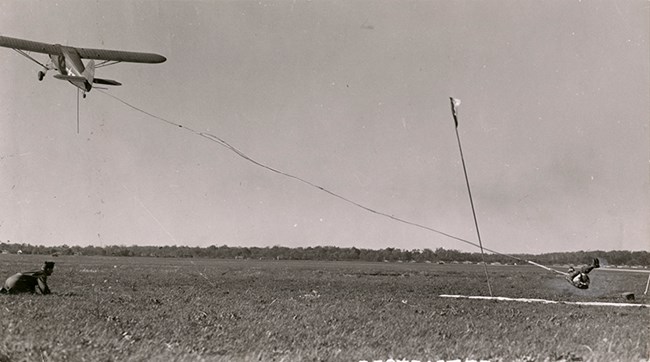
Courtesy of Wright State University Archives
Questions for Photos 1-3 and Reading 1
- What details do you notice in the photos?
- Why did local companies and factories hire women? What do you think was the short and long-term impact of these hires?
- Describe the importance of factories switching from peacetime products to war manufacturing.
- What challenges may women have had entering the war production workforce?
- Consider map 1. How would the location of the sites impact the designation of not just Dayton as the Heritage City, but also surrounding Montgomery County?
- How did Dayton and Montgomery Co. support the increasing role of aviation in military defense?
Teacher Tip: There are five sections in this primary source. Because of the length, and/or time constraints, assign small groups of students to one section for reading and discussion. Then, guide each group to share key findings that connect to the essential question.
War in the Air: Dayton’s Role Vital, Indispensable: Powerful Air Armada Created By Work At AAF Bases in Area
The Dayton Herald (Dayton, Ohio) · Sun, Dec 5, 1943 (p.42)
By Alexander McSurely
Two years after Pearl Harbor, Dayton has earned the right to take a bow, but just doesn’t have the time to spare from the continuing 24-hour-a-day job of the still-expanding war effort, to take it.
For the role this Dayton-Miami Valley area has played in building American air power to the status of the most powerful striking weapon the world has ever known, has been a vital, an indispensable contribution.
Headquarters for two of the most important of the Army Air Forces commands, the Material Command at Wright Field, and the Air Service Command at Patterson Field, have focused in the Dayton area the two jobs of providing the best fighting planes in the world, and of keeping them flying by maintaining and supplying them.
In the two years of war, the two big Army airfields have expanded their personnel and activities many fold, to the point where at last reports there were approximately 65,000 persons engaged in a wide variety of operations and activities, all directly connected with those two jobs.
How well Wright Field has done its job of providing better fighting planes is a question that is answered best by the newspaper stories of growing United Nations air might, of more and more powerful air thrusts at a weakening, if still dangerous Axis. The individual roles of P-38 Lightnings, P-47 Thunderbolts, F-39 Airacobras, and P-40 Warhawks, all developed under supervision of Wright Field laboratories, is perhaps more spectacular than the thundering devastation caused by precision bombing of American Flying Fortresses and Liberators, also products of Wright Field development. But the military strategists know that those big bombers, and the still bigger ones soon to come, are the real offensive weapons of this war.
Far-righted [sic] analysts like Brig. Gen. Hugh J. Knerr, former deputy commander of Air Service Command here, now in England, predicted months ago that if air power was given its proper chance the time would come when the ground forces would only need “to march in behind the band.” And from the reports of attrition now coming from the European continent, that time may be nearer at hand than we realize.
ASC Contribution
Equally important though less spectacular is the job which Air Service Command has been doing from its Dayton headquarters, in maintaining steady flow of supplies over thousands of miles of routes, to front-line bases scattered all over the world, and in providing men and equipment to repair and maintain planes in fighting condition for the ever-intensifying air thrusts.
Newest and largest command in the air forces, the Air Service Command went through severe growing pains in its tremendous expansion, pains with which Dayton is perhaps more familiar than other parts of the country, but that is now largely a matter of record, and the job the ASC is now doing was indicated in the recent conference of ASC overseas officers at Patterson Field, when officers from every theater reported substantially the same thing: ‘The supplies are coming through. The number of planes grounded for want of spare parts or equipment is negligible.’
Wright Field’s huge laboratories and experimental buildings, the physical buildings and grounds were valued at $150,000,000 about a year ago, and since that time many millions in construction have been poured in until now the physical valuation on the big installation is probably near the $170,000,000 mark.
The two big ASC installations on Patterson Field, the Fairfield area ASC and the ASC headquarters, where more uniform construction because of lack of special equipment for experimental and testing work is possible, represent a physical investment of many millions more.
Alumni Active
“Alumni” of those two Dayton Army air bases are playing leading roles in virtually every air combat theater, under leadership of General H. H. Arnold, himself a one-time executive officer of Wright Field, now commanding general of the Army Air Forces.
One of the little-published but important factors in this war has been the engineering planning that went into special missions like the Tokyo raid led by Major Gen. Jimmy Doolittle, another Wright Field alumnus, much of which was done here at Wright Field. When the veils of secrecy are lifted after the war, it may be shown that the two Dayton fields played similarly essential tasks in engineering and supplying many of the other key air attacks which won the war.
Equally important with the airplanes themselves are the many thousands of items of equipment provided to make the airplanes flyable, and to facilitate the work of the air and ground crews. Flying suits, leakproof tanks and fuel lines, improved turrets and bombracks, rubber life rafts, oxygen masks, are just a few of them. Air Service Command estimates it stocks 500,000 separate items, all of them needed by the Army Air Forces. Testing and developing these to new standards of efficiency has been another essential part of the Material Command’s testing center.
Airport Expansion
Newer than the established Army fields, but already taking its place as another vital war activity is the Army modification center at Dayton municipal airport, Vandalia. Just about a year ago, the Army announced it would expand Dayton’s airport to an 800-acre layout, widen and extend its runways, and build a modification center at the north end of the new enlarged field. An estimated $5,000,000 has been expended in making this new center, where aircraft hot off the production line are brought in and modified for use in a specific combat theater, where special equipment and armament may be needed. Here, too, is the new home of Wright Field’s accelerated service test branch, an organization of service pilots which takes production models of every plane and flys (sic) them in gruelling (sic) tests to find flaws and deficiencies before the planes go into combat.
Predominantly Dayton’s aviation activity in these two years of war has been concerned with these three Army airfields, but there have been other contributions not to be overlooked.
The job that the two airlines serving Dayton have done, in the face of curtailed equipment and changing personnel, has been an important contribution. Providing speedy transportation in and out of Dayton for men on important missions, and for cargo shipments vital to speed the war effort, has been accomplished so successfully that it has opened the eyes of many a heretofore ground-minded individual to the possibilities of air transportation in the postwar world.
Organization of a Dayton group of the Civil Air Patrol shortly after Pearl Harbor, brought Dayton’s private flyers into the war picture. In the intervening months the CAP has sent some of its Daytonians to do anti-submarine patrol work, while the stay-at-homes have undertaken the two jobs of operating a courier air service for war industries, and of recruiting suitable enlistments for Army aviation cadets. By a preliminary CAP cadet program, the youths so recruited get a pre-schooling in subjects of value to them in their cadet training.
Early in the war, both Army and Navy aviation cadets received preliminary training at fields in the Dayton area, although this has been largely discontinued. But even now, one Dayton airport, South Dayton, is giving training to young women flyers, preparing them to be WASPs, or Women Auxiliary Service Pilots, to ferry military planes.
Contribute Too
It would be impossible to break down Dayton’s war industries, to determine the amount of contribution they are making to military aviation, through their wide variety of products, but it is likewise an important factor in the national production picture.
Probably the largest Dayton organization exclusively in aviation products is Aeroproducts division of General Motors, at Candalia, where propellers are being manufactured for our fighting planes. Frigidaire is making another type of propeller, and airplane machine-guns, Delco Products is making airplane landing gear struts. National Cash Register and Chandler-Evans are making carburetors, while United Aircraft Products, Standard Aircraft corporation, Variety Aircraft corporation, McCauley Steel Propeller corporation, and many other smaller shops are making various parts for airplanes or aircraft equipment.
Not to be overlooked are two airplane companies in the immediate Miami Valley territory, Waco at Troy, which has been the lead plant for the entire Army glider program, and which also supplied a number of training planes for the Civilian Pilot Training program earlier in the war, and Aeronca corporation at Middletown, which turned from building light planes, to make training gliders, Army liaison planes, heavier training planes, and parts for bigger ships.
That ends the roll call of Dayton and Miami Valley aviation contribution to the war effort, but the imposing total leaves a question in thinking Daytonians’ minds. These activities will continue in all-out effort as long as they are needed in the war emergency, but what happens then? Will Dayton slump in aviation in the postwar, as she did after the First World War? Or will community leadership find a way to utilize the many advantages in this great new industry which have been concentrated here because of the war, to build Dayton into a leading position in peacetime aviation in the postwar Air Age?
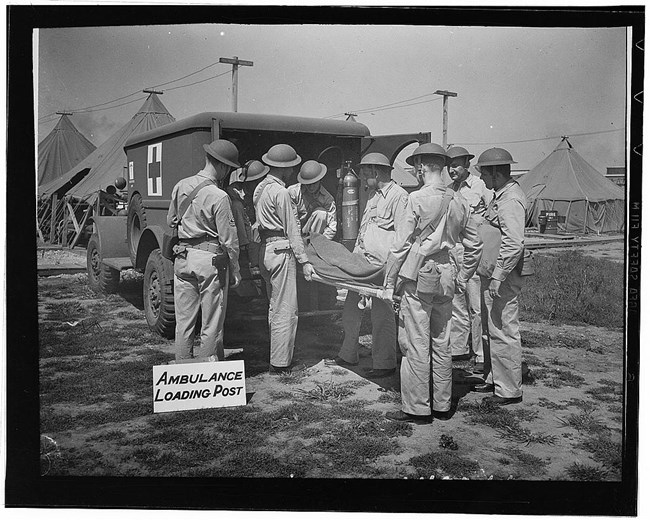
Courtesy of the Library of Congress
Questions for Reading 2
- Identify and describe at least two locations of importance for progress in aviation in Dayton. What was the impact of the work done there?
- Using information from the reading, why would Dayton and Montgomery County be considered a target for enemies?
- Consider the long-term impacts of war production and aviation on Dayton, Ohio. With today’s modern perspective, try answering the questions written by the author in the last part of the final paragraph. (If time, research current data, demographics, and businesses of Dayton over time since the 1940s to support your answer.)
Wrapping up: the lesson’s essential question
-
How did Dayton and Montgomery County contribute to the material and strategic needs of the US military during WWII? Use evidence from the sources to summarize.
Extension
Corporal Mary Suzanne Groshong of the Army Air Forces/Corps (Interview)
Corporal Groshong served at Wright Field in Dayton, Ohio, from 1944-1945. She had experience working in a shipyard the summer before, contributing to the war efforts prior to enlisting. She took a train from Seattle to Ohio after enlistment.
“There weren’t many women who had been in the Armed Forces before this. I was twenty years old, and I had to get my parents’ permission...”
“Since this was Wright Field, and it was named after the Wright Brothers... I heard the first jet take off from the field. Everyone wondered about the roar...”
You can view the full interview at the Library of Congress website.
Additional Resources
The history of aviation in Dayton and Montgomery County
Dayton’s aviation history starts at the beginning of the history of flight, with the Wright brothers. Learn more about the history of aviation in the area leading up to the 1940s with these resources:
Tags
- teaching with historic places
- military history
- twhplp
- twhp
- hour history lessons
- wwii
- world war ii
- wwii history
- world war ii history
- world war ii home front
- wwii home front
- women's history
- aviation
- american world war ii heritage city program
- awwiihc
- dayton
- ohio
- mid 20th century
- labor history
- defense production
- civil defense
- airfield
Last updated: August 11, 2023
